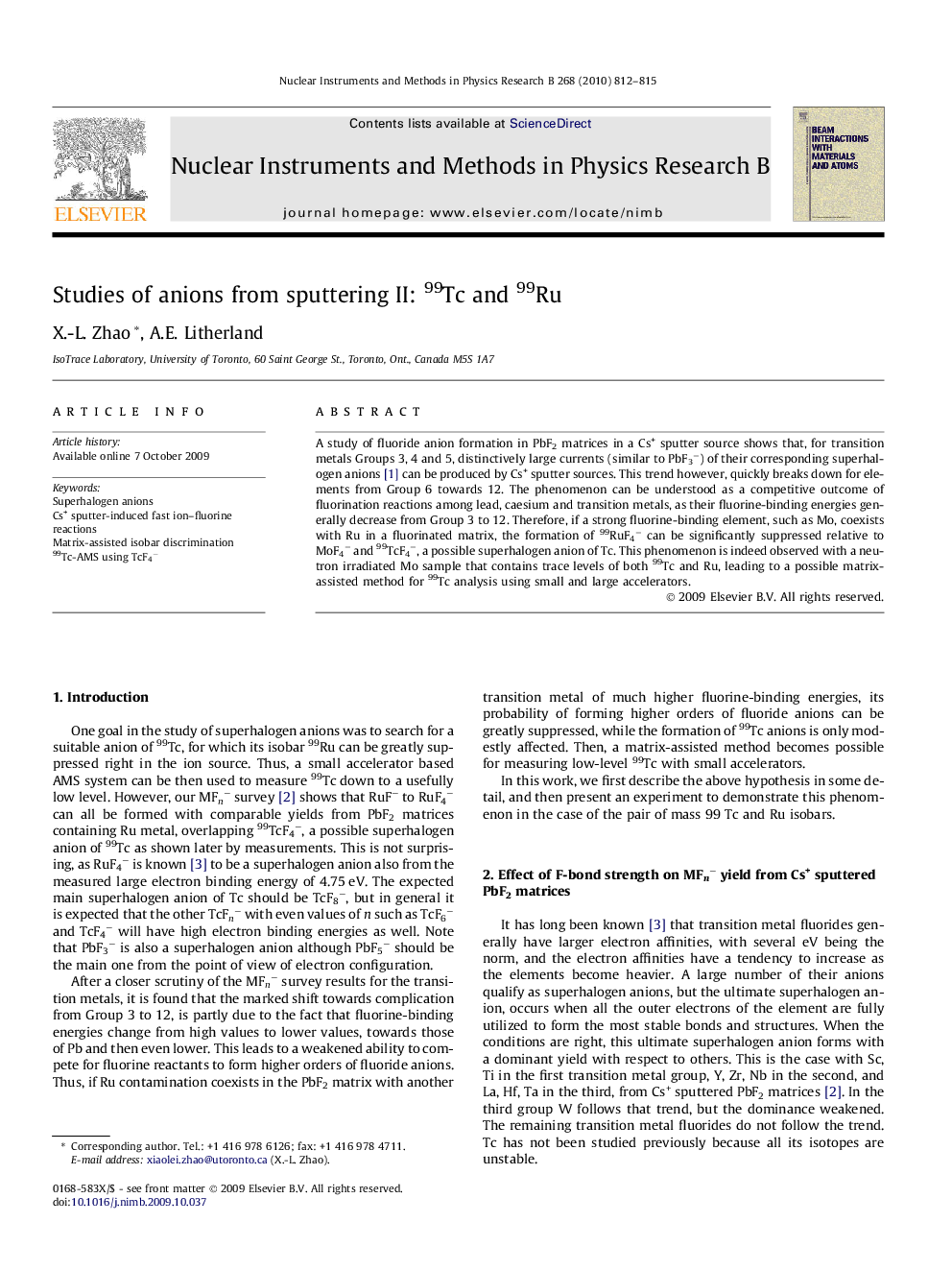| Article ID | Journal | Published Year | Pages | File Type |
|---|---|---|---|---|
| 1683573 | Nuclear Instruments and Methods in Physics Research Section B: Beam Interactions with Materials and Atoms | 2010 | 4 Pages |
A study of fluoride anion formation in PbF2 matrices in a Cs+ sputter source shows that, for transition metals Groups 3, 4 and 5, distinctively large currents (similar to PbF3−) of their corresponding superhalogen anions [1] can be produced by Cs+ sputter sources. This trend however, quickly breaks down for elements from Group 6 towards 12. The phenomenon can be understood as a competitive outcome of fluorination reactions among lead, caesium and transition metals, as their fluorine-binding energies generally decrease from Group 3 to 12. Therefore, if a strong fluorine-binding element, such as Mo, coexists with Ru in a fluorinated matrix, the formation of 99RuF4− can be significantly suppressed relative to MoF4− and 99TcF4−, a possible superhalogen anion of Tc. This phenomenon is indeed observed with a neutron irradiated Mo sample that contains trace levels of both 99Tc and Ru, leading to a possible matrix-assisted method for 99Tc analysis using small and large accelerators.
